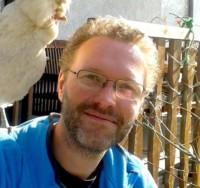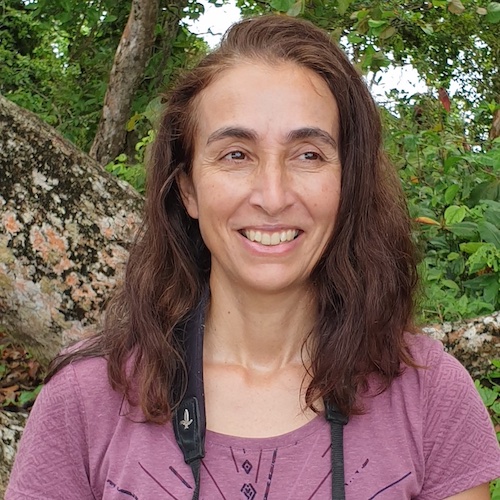#BOUsci22 – Keynotes
Birds as individuals

23 November 2022
In-person (Peterborough, UK) and on Twitter
Keynotes

Rosemarie Kentie
Royal Netherlands Institute for Sea Research (NIOZ), the Netherlands
Rosemarie Kentie is a postdoc at the University of Amsterdam and guest researcher at the Royal Netherlands Institute for Sea Research (NIOZ) where she studies the effects of environmental changes on breeding gull populations. She combines fieldwork in breeding colonies with GPS-tracking and diet analyses. Much of her work is based on long-term (mark-recapture) datasets. Rosemarie is associate editor of IBIS and chair of the IBIS Management Committee.
View profile
Population dynamics and individual ecological specialisation
To understand long-term individual behaviour and their effects on fitness, birds must be individually recognisable to be able to follow them. We follow sympatrically breeding Lesser Black-backed Gulls and Herring Gulls since 2006 in a study colony in the Netherlands both with colour-rings and GPS trackers, and monitor their diet, phenology and reproductive output. Both are generalist species with a diet originating from sea, agricultural land and urban areas. In both species, individuals tend to specialise in where they forage, and often also in what they forage on. Individuals also differ in where they winter. While Herring Gulls winter within the Netherlands and not far beyond, migratory distances of Lesser Black-backed Gulls range from 300 to 5000 km one-way and individuals are site faithful to their winter destinations. How do these foraging and wintering strategies emerge within individuals, and how do they affect fitness? To maintain these different individual strategies, we would expect that fitness of these different behaviours would not differ much. However, with rapidly changing conditions in food availability, such as closures of landfills along the flyway and large-scale changes at the North Sea (fishery policies, wind farm constructions), do we still expect that different strategies lead to similar fitness? These are the key questions we ask in our research and which we are in the process of studying. In this keynote I will show some of the results of our studies on the effects of individual strategies of Herring Gulls and Lesser Black-backed Gulls.

Rachael Miller (Harrison)
Anglia Ruskin University, UK
Rachael is a comparative psychologist and behavioural ecologist, with extensive expertise in animal cognition, behaviour, welfare and conservation, and child development. Her research focuses on the evolution of cognition, using comparative, ecological and developmental approaches primarily in birds and children, with a productive academic output and teaching record. Current research: Cognition in Animal Conservation (applying cognition research to avian conservation initiatives) & the ManyBirds Project (big-team Open Science approach to avian cognition & behaviour).
View profile
Applying fundamental knowledge of individual differences within avian conservation
Cognitive abilities – defined broadly as “perception, learning, decision making and memory” – are vital to animal behaviour. Crucially, cognition determines in part an animal’s ability to adapt (i.e. respond flexibly) to variation in ecology and the social environment, including responses to novel, human-imposed environmental challenges like poaching and habitat degradation. Many species show individual differences that have important fitness and survival implications, including behavioural flexibility that underlies adaptive behavioural responses to changing environments. Some individual differences are consistent across time and contexts, such as responses to novelty (e.g. neophobia), exploration and innovation (e.g. problem-solving). Fundamental research that quantifies individual and species-level differences may be applied to conservation strategies. For instance, pre-release selection of individuals’ cognitive and non-cognitive traits, like anti-predator responses affects post-release survival measures, like invasion or reintroduction success. Other reintroduction based applications that may be informed by this research include release decisions and development of training/ release protocols to modify cues or promote survival skills. For example, increasing fear responses to traps/ humans where poaching is highest risk or decreasing responses to new safe food sources in low-resource areas. A key concurrent step is to test real outcomes of such interventions through post-release monitoring of survival and fitness (e.g. reproductive output). I review some research utilising fundamental knowledge of individual differences in conservation, including reference to my research on critically endangered Bali myna and through the ManyBirds Project. Applying individual differences can offer real opportunities to enhance the success of conservation, both in-and ex-situ.
Niels Dingemanse
Ludwig-Maximilians-Universität München (LMU), Germany
Niels Dingemanse is a professor of Behavioural Ecology based at the Ludwig Maximilian University of Munich. His research focuses on the quantitative genetics of animal behaviour, selection pressures acting on this variation in the wild, and the development of statistical tools to measure this variation. He works with nest box populations of blue and great tits, and further focuses on social interactions and social evolution in wild house sparrows, and captive field cricket, populations.
View profile
Why birds have personalities: an ecological and evolutionary perspective
Behavioural ecologists have long studied the tremendous variation that characterizes animal behaviour. Why do animals behave the way they do? And how does behaving in a certain way benefit them? Until the turn of the century, most work focused on understanding the behaviour of the average individual in a population or species. More recently, behavioural ecologists seek to also understand differences between individual animals. This field of study is known as “animal personality” research because we have become aware that animals differ in suites of behaviours similar to how humans differ in personality! This keynote will summarize what we know about birds as individuals in the context of individual behaviour (aka “avian personality”). What are its proximate underpinnings? Are personalities genetically fixed or shaped by experiences? And how is it possible that different personality “types” coexist within the same population? Many of these questions have been investigated using long-term nest box populations of great tits, where individuals are screened for their behaviour, life-history decisions, and reproductive success. This keynote will focus on avian personality variation in natural populations, and demonstrate the importance of social interactions and density-dependent fluctuating selection as key mechanisms maintaining avian personalities within and among West-European great tit populations. The take home message is that studying birds as individuals is important and insightful, as individuality in behavior is likely adaptive and maintained by natural selection.
Aldina Franco
University of East Anglia, UK
I am a conservation ecologist interested in movement ecology, biogeography and ecological responses to global change. My research targets understanding the determinants of species range limits at different spatial scales, to predict the effects of global environmental change on biodiversity and to inform the design of priority areas for conservation. My group uses and develops new tracking technologies to investigate changes in animal movement strategies, for example, the establishment of non-migratory populations in previously wholly migratory species.
View profile
Determinants of variability in individual migratory behaviour
Migration is a fantastic natural history phenomenon that is common in areas with high seasonality but within species and populations there can be variability in the movement strategy individuals adopt. Some species are obligate migrants, and all individuals migrate, while others have individuals that adopt different movement strategies. In recent decades the number of non-migratory individuals in migratory populations has increased and this has been associated with global environmental change. Although migration is an inherited trait, interactions with environmental factors can influence the strategies individuals adopt. The determinants of the variability between individuals are poorly known but can provide key information to understand how species adjust to environmental change and help conservation efforts. I will examine the drivers and mechanisms underlying migratory behaviour and will look at species with asynchronous migrations, i.e., with variability in migration timing, to investigate the influence of conditions individuals experience during migration on migratory performance, route, and destination of migrants. I will show data my group has been collecting over the last 10 years for a long-lived species (white stork) with individuals that adopt different migratory strategies as they develop. While previously a fully migratory species, the number of resident white storks has increased dramatically in recent decades in southern Europe. By tracking individuals over multiple years, through their developmental stages, we examined the influence morphological traits (e.g. size, overall body acceleration), foraging resources and environmental factors (i.e. environmental conditions individuals encounter) in the movement decisions individuals adopt as they develop.

Damien Farine
University of Zurich, Switzerland
Australian National University, Australia
Max Planck Institute of Animal Behavior, Germany
Damien Farine is an Eccellenza Professor at the University of Zurich and an Associate Professor at the Australian National University. He is also an associate member of the Max Planck Institute of Animal Behavior, where he established a research group in 2015 to study collective and social dynamics in avian societies. Damien did his PhD at the Edward Grey Institute of Field Ornithology at the University of Oxford, and spent two years as a postdoc at the University of California Davis working on collective movement and decision-making in wild baboons. He has published on social behaviour across a wide range of species, but is especially interested in bridging studies of social behaviour across birds and primates.
View profile
The social lives of vulturine guineafowl: from individual strategies to collective decisions
Sociality is widespread across birds. While living in a social group can bring many benefits, such as earlier detection of predators and increased reproductive success, it also introduces significant challenges that must be overcome. For example, living in a group requires maintaining cohesion, coordinating actions, and reaching consensus about what to do next. While it is often assumed that group members simply follow a dominant leader, evidence is emerging—across a range of taxa—that coordination is maintained by very simple movement rules and that decisions are made largely democratically. This is the case for the vulturine guineafowl (Acryllium vulturinum), which live in large groups and form a multilevel society. Despite the significant conflicts of interest among group members, ranging from strictly dominant males through to the most subordinate females, every individual group member is able to contribute to group decisions. However, individuals are also highly strategic, both in their interactions with others and in their contributions to group movements, highlighting the fascinating interplay between individuality and group membership in complex animal societies.
Scientific Programme Committee
Dr Thomas Bodey | Chair | Aberdeen University, UK View
Dr Ana Payo Payo | Aberdeen University, UK and BOU Meetings Committee View
Dr Karin Maldonado | Universidad Adolfo Ibáñez, Chile View
Dr José Alves | University of Aveiro, Portugal and BOU Meetings Committee View
Images
Black-legged Kittwakes (top small) | Gregory “Slobirdr” Smith CC BY SA 2.0 Wikimedia Commons


